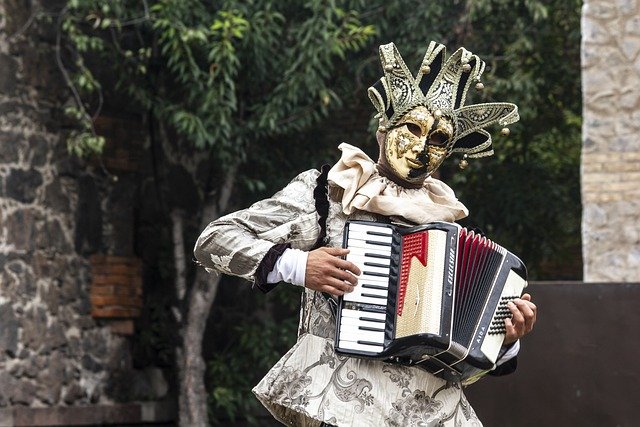Exploring Costumes Around the World
Costumes let people show creativity and celebrate different traditions. From bright festival outfits to stage costumes, this article explores how clothes tell stories, the materials used, and the ways colors, patterns, and designs make each costume unique and exciting to learn about.

Traditional Costumes as Cultural Heritage
Traditional costumes function as living museums, preserving cultural heritage through specific colors, patterns, and construction techniques. In Japan, the kimono exemplifies this perfectly—its elaborate design indicates the wearer’s social status, age, and even the season. Similarly, Norway’s bunad features intricate embroidery patterns unique to specific regions, allowing Norwegians to display their geographical heritage. Materials often reflect local resources, such as the wool prominently featured in Andean attire or the silk used throughout East Asian ceremonial garments. The handcraft techniques employed—whether embroidery, weaving, or dyeing—represent skills passed down through generations, ensuring cultural continuity despite modernization pressures. Many countries now establish formal preservation programs to document and protect these traditional costume-making practices before they disappear.
Festival Costumes and Ceremonial Significance
Festival costumes transform ordinary individuals into extraordinary beings during ceremonial celebrations worldwide. The Rio Carnival showcases this spectacularly, with dancers wearing elaborate feathered headdresses and sequined bodysuits that shimmer under the Brazilian sun. In contrast, Mexico’s Day of the Dead features participants adorned in skeletal makeup and formal attire adorned with marigold flowers, honoring ancestors while celebrating life. Religious festivals often incorporate symbolic elements into costume design—Thailand’s ghost festivals utilize masks representing spirits, while India’s diverse celebrations feature region-specific color symbolism. The communal aspect of donning festival costumes creates shared identity experiences, reinforcing social bonds through collective participation. These costumes often blend traditional elements with contemporary materials, demonstrating how ceremonial dress evolves while maintaining cultural relevance.
World Costumes Through Historical Periods
World costumes reveal fascinating evolutionary patterns that parallel broader societal developments throughout history. Medieval European garments reflected strict social hierarchies through sumptuary laws restricting certain fabrics and colors to nobility. The Renaissance brought dramatic silhouette changes, with padded doublets and voluminous skirts symbolizing prosperity. In East Asia, the Tang Dynasty’s cosmopolitan influences produced wide-sleeved robes incorporating Central Asian design elements. Colonial exchanges dramatically transformed indigenous dress worldwide—introducing new materials while sometimes forcibly replacing traditional garments with European styles. Each historical period’s costume innovations reflected technological advancements, from the Industrial Revolution’s machine-made fabrics to synthetic materials developed during the 20th century. Examining these evolution patterns helps historians understand how societies responded to changing environments, political systems, and cross-cultural exchanges throughout human history.
Stage Costumes in Performance Arts
Stage costumes serve critical narrative functions in performance contexts, instantly communicating character information to audiences. Ballet costumes emphasize movement through lightweight materials that extend the dancer’s lines, while traditional Chinese opera features elaborate symbolic makeup and headdresses indicating specific character types. Contemporary theater designers employ psychological color theory—using warm tones for protagonists and cool colors for antagonists—to subconsciously guide audience responses. Technical considerations significantly impact design choices: durability for physically demanding performances, quick-change capabilities for actors playing multiple roles, and visibility factors for large venues. The collaborative process between costume designers, directors, and performers ensures garments enhance rather than restrict performance quality. Stage costumes often become iconic cultural references themselves, from the Swan Lake tutu to the distinctive masks used in Japanese Noh theater.
Cosplay and Contemporary Costume Culture
Cosplay represents a modern costume phenomenon connecting enthusiasts worldwide through shared appreciation for character representation. This participatory culture encourages practitioners to develop complex fabrication skills—learning to work with materials ranging from thermoplastics to electronics for lighting effects. Online communities facilitate knowledge exchange through tutorial videos and pattern sharing, creating global networks of costume creators. Major conventions like Comic-Con International attract thousands of cosplayers annually, generating significant economic impact for host cities while providing spaces for artistic recognition. The movement has evolved from niche hobby to mainstream cultural practice, with professional cosplayers earning income through appearance fees, merchandise sales, and social media partnerships. This contemporary costume culture demonstrates how traditional garment-making skills find new applications within digital-age communities, perpetuating mankind’s enduring fascination with transformative dress.
Regional Variations in Traditional Costumes
Regional variations within countries reveal fascinating microcosms of cultural diversity expressed through traditional costumes. Indonesia’s archipelago contains over 17,000 islands, each developing distinctive textile traditions—from Sumatra’s ship cloth to Java’s intricate batik patterns. Geographic factors significantly influence design elements: mountainous regions typically feature heavier wool garments with practical layering systems, while tropical areas develop lightweight, breathable clothing suited to humid conditions. Historical influences appear through borrowed elements that reveal past interactions—Ottoman motifs appearing in Eastern European embroidery or Chinese silk techniques influencing Japanese costume construction. Migration patterns create particularly interesting costume evolution, as displaced communities adapt traditional garments to new environments while maintaining core identity markers. These regional distinctions demonstrate how costume development responds to environmental factors while simultaneously expressing cultural identity through visible differentiation from neighboring groups.
Traditional costumes continue to inspire contemporary fashion designers who incorporate cultural elements into modern collections. This cross-pollination between heritage garments and current trends ensures that costume traditions remain relevant even as societies modernize. Through museum exhibitions, cultural festivals, and educational programs, these important cultural artifacts maintain their significance while evolving to meet changing social contexts. The study of world costumes provides valuable insights into human creativity, adaptation, and the universal need for self-expression through personal adornment.




